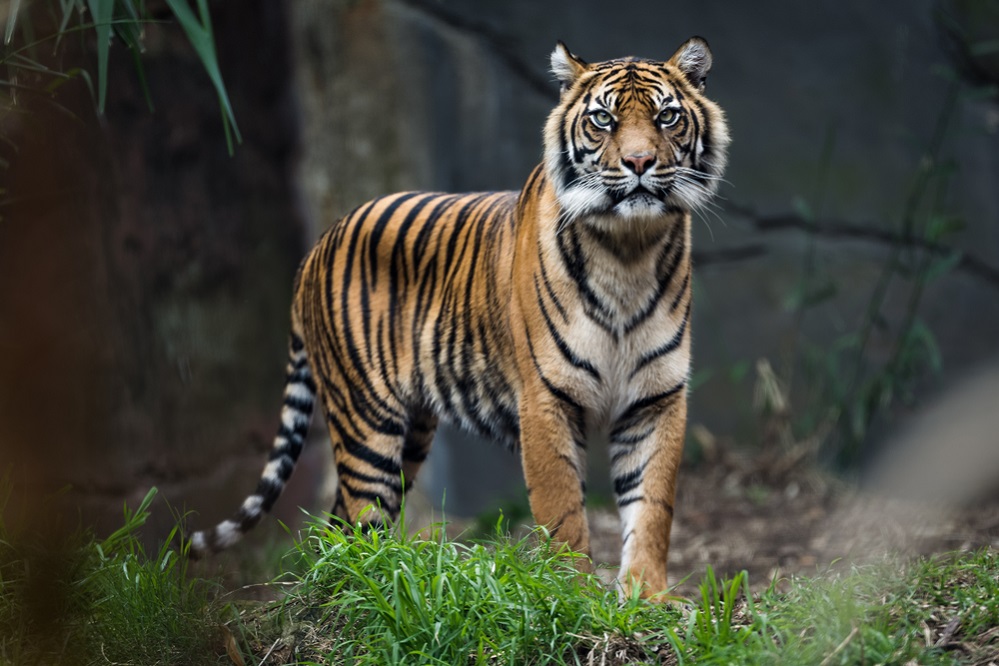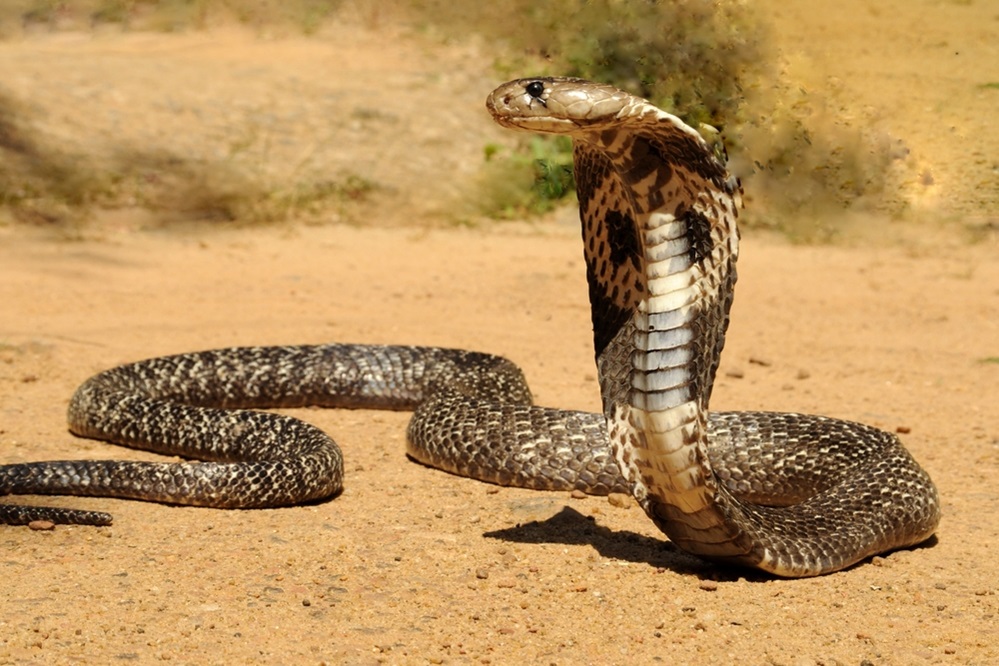The tiger, with its awe-inspiring beauty and formidable presence, stands as one of the most iconic and majestic creatures on Earth.
As the largest cat species, tigers are revered for their strength, agility, and striking coat patterns, which vary among the different subspecies.
Found primarily in the forests, grasslands, and wetlands of Asia, these solitary hunters command respect and admiration. However, despite their revered status, tigers face numerous threats, including habitat loss, poaching, and human-wildlife conflict.
In this exploration, we delve into the world of the tiger, uncovering its fascinating biology, behavior, conservation status, and the cultural significance that has captivated humanity for centuries.
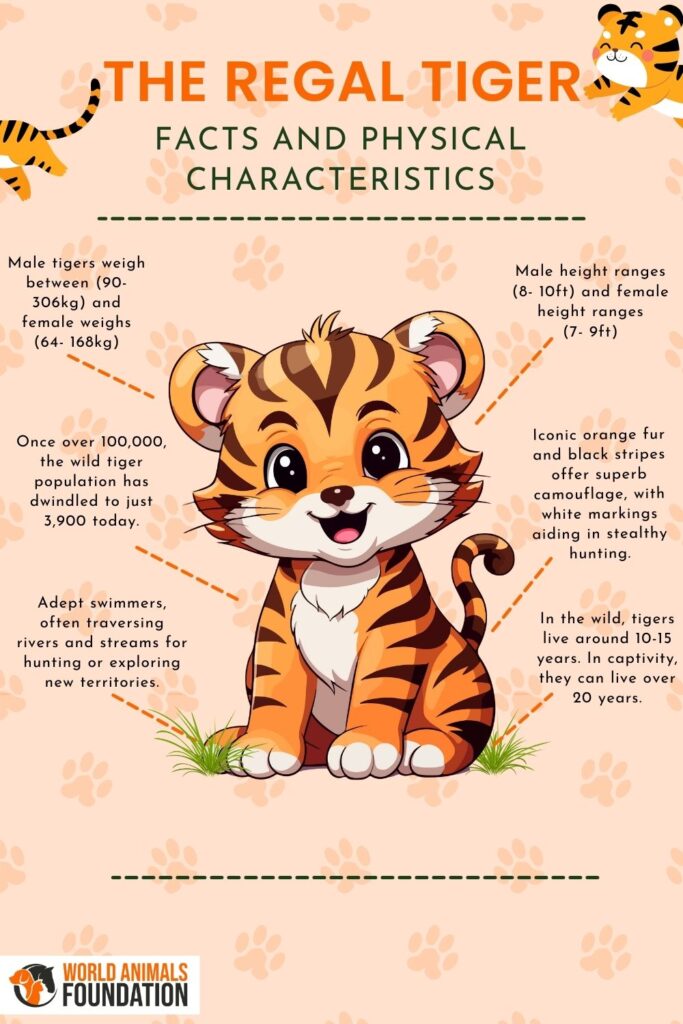
Development and Ancestry
The tiger, scientifically known as Panthera tigris, is believed to have evolved around 2 million years ago from a common ancestor shared with the modern-day snow leopard. Fossil records suggest that the earliest tigers were smaller in size compared to today’s species and inhabited regions across Asia, from Turkey to eastern China.
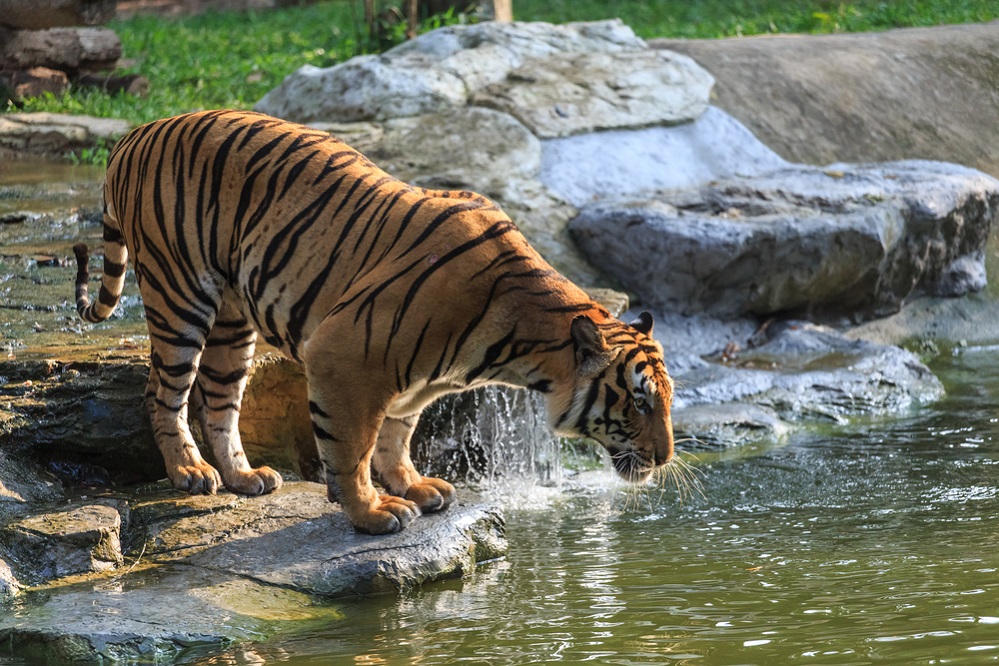
Over time, tigers underwent significant evolutionary changes, adapting to diverse environments and developing unique characteristics that distinguish them from other big cats. These adaptations include their striped fur, which provides effective camouflage in their natural habitats, and their large body size, which is crucial for hunting large prey.
Tigers are classified into several subspecies, each adapted to specific environments and exhibiting distinct physical characteristics. These subspecies include the Bengal tiger, Indochinese tiger, Siberian tiger, Malayan tiger, and Sumatran tiger, among others.
Despite their evolutionary success, tigers today face numerous threats, including habitat loss, poaching, and human-wildlife conflict.
Scientific Classification of Tiger
Physiology and Visual Characteristics of the Tiger
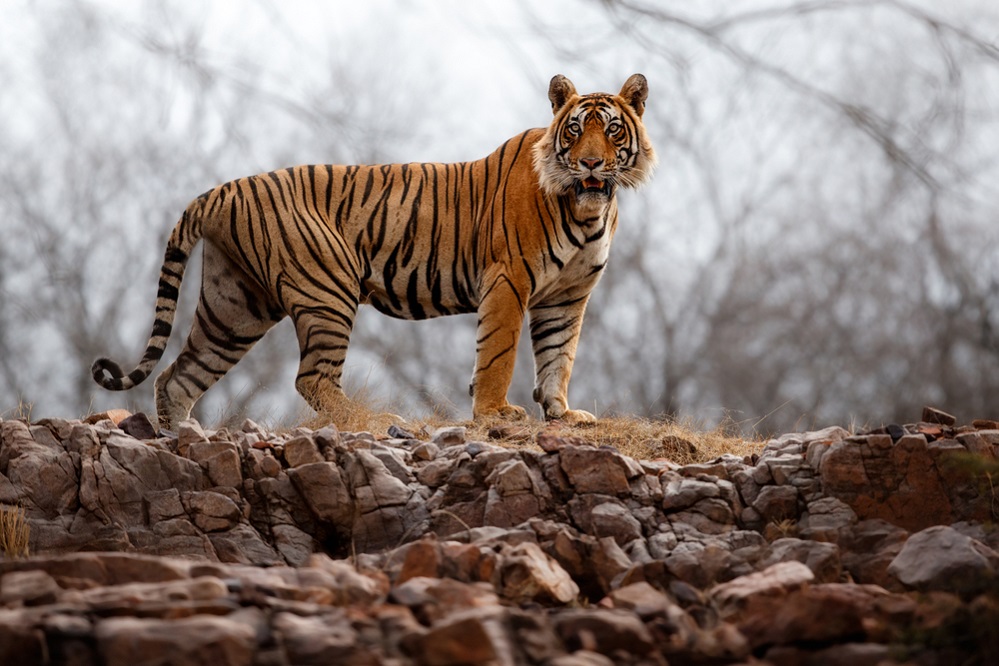
The tiger, characterized by its awe-inspiring appearance and robust anatomy, is one of the most striking big cats in the world. Their physical features are adapted for hunting and survival in diverse habitats, ranging from dense forests to grasslands and swamps.
Tigers are known for their muscular build, which enables them to take down large prey. They have a relatively large head and powerful jaws, equipped with sharp teeth and retractable claws that they use for hunting. Their hind limbs are longer than their front limbs, providing them with incredible leaping and running abilities.
Unlike lions, tigers do not have a noticeable mane. Tigers have short, sleek fur on their heads and necks, which blends seamlessly with the rest of their coat.
One of the most distinctive features of the tiger is its coat, which is covered in dark stripes against a lighter background, providing excellent camouflage in their natural habitats. The pattern of stripes is unique to each individual, much like human fingerprints, making it a key feature for identification.
Tigers also have keen senses, including exceptional night vision and a strong sense of smell, which aid them in hunting and navigating their environment.
Size and Weight
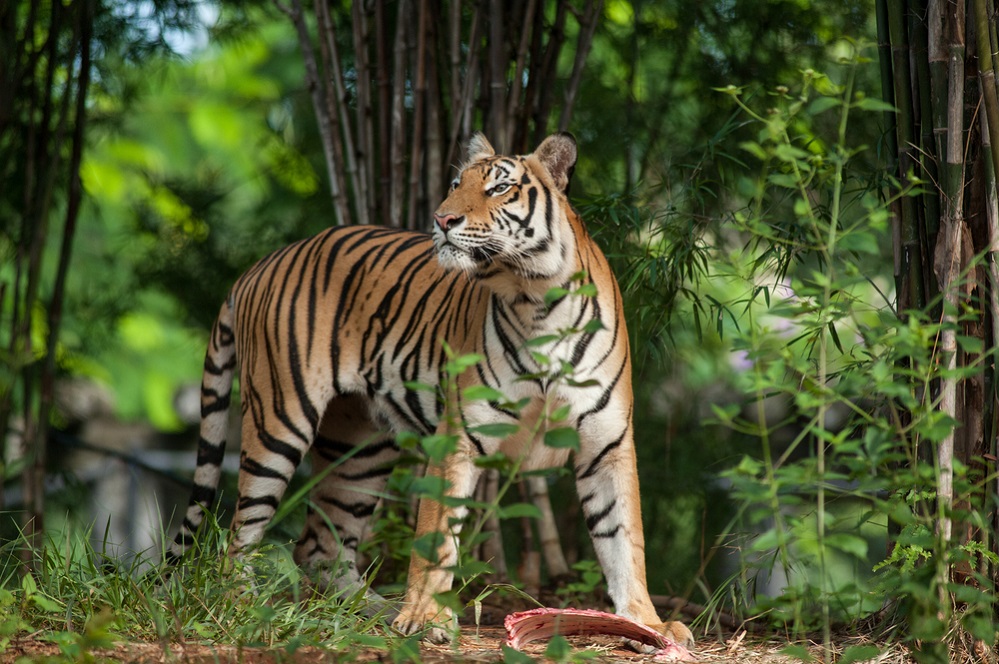
Tigers are the largest cat species in the world, with males typically being larger than females. The size of tigers can vary depending on the subspecies and the region they inhabit.
On average, male tigers can weigh between 200 to 670 pounds (90 to 306 kg) and measure around 8 to 10 feet (2.4 to 3 meters) in length. Female tigers are generally smaller, weighing between 140 to 370 pounds (64 to 168 kg) and measuring around 7 to 9 feet (2.1 to 2.7 meters) in length.
The largest subspecies of tiger is the Siberian tiger, also known as the Amur tiger, which can weigh up to 670 pounds (306 kg) and measure up to 10 feet (3 meters) in length. The smallest subspecies is the Sumatran tiger, which typically weighs between 140 to 310 pounds (64 to 140 kg) and measures around 6 to 7 feet (1.8 to 2.1 meters) in length.
Tigers have a robust build, with strong muscles and broad shoulders, which enables them to take down large prey. Their size and strength make them apex predators in their ecosystems.
Color
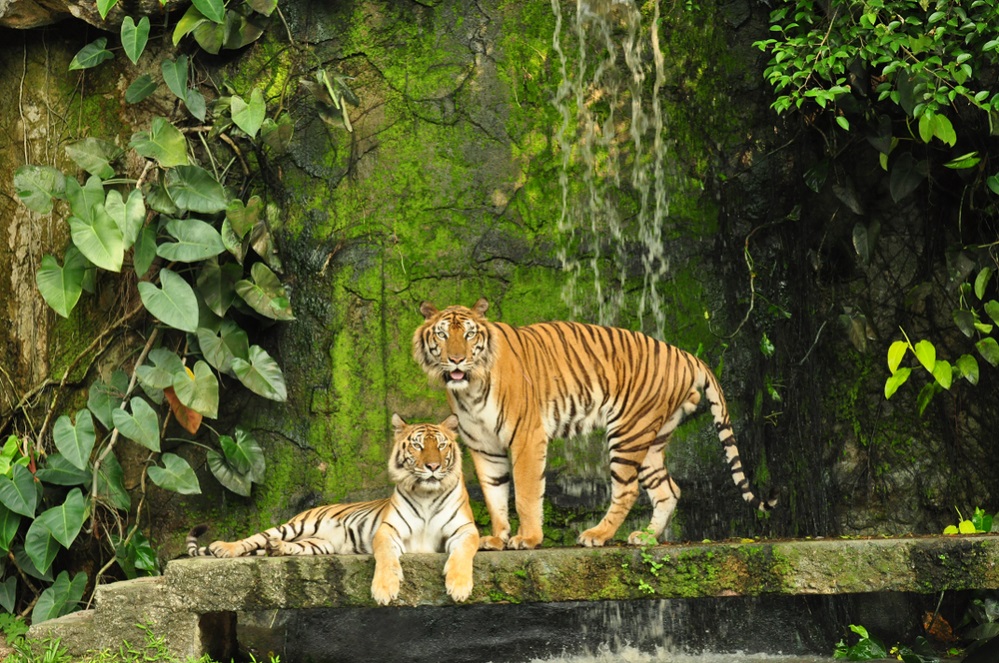
Tigers are known for their striking orange fur with black stripes, which provides them with excellent camouflage in their natural habitats. The shade of orange can vary from a light, almost yellowish color to a deep, rich orange, depending on the subspecies and the individual. The black stripes are unique to each tiger and act like fingerprints, as no two tigers have the same stripe pattern.
In addition to their orange fur and black stripes, tigers also have white markings on their face, neck, belly, and the insides of their legs. These white markings help break up their outline and further aid in camouflage. Some tigers also have a white spot on the back of their ears, known as ocelli, which is thought to act as a false eye to deter potential attackers.
The coloration of tigers is a highly effective adaptation for their survival in the wild, allowing them to blend in with their surroundings and ambush prey with precision.
Geographical Spread and Natural Habitat
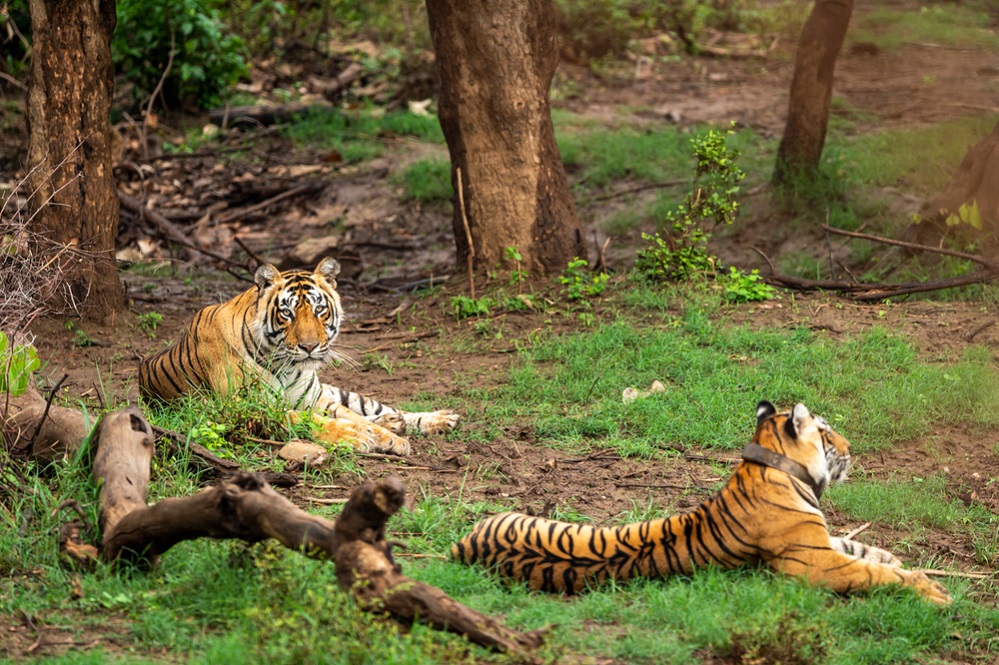
The tiger’s geographical spread and natural habitat are as diverse as they are fascinating. Historically, tigers were found throughout Asia, from Turkey to eastern China and south into the Indonesian islands. However, due to extensive habitat loss and poaching, their range has significantly decreased, and they are now primarily found in scattered pockets across South and Southeast Asia.
Tigers are highly adaptable and can thrive in a variety of habitats, including tropical forests, mangrove swamps, grasslands, and even snow-covered forests. They are known to inhabit a range of altitudes, from sea level to mountainous regions.
The specific habitat requirements of tigers vary depending on the subspecies. For example, the Siberian tiger, also known as the Amur tiger, is found in the forests of eastern Russia, where cold temperatures and deep snow are common. On the other hand, the Bengal tiger is found in the dense forests and mangrove swamps of India, Bangladesh, Nepal, and Bhutan.
Despite their adaptability, tigers require large areas of contiguous habitat to thrive, as they are solitary animals that require plenty of space to hunt and roam. Conservation efforts are underway to protect and restore tiger habitat to ensure the survival of these magnificent creatures for future generations.
Facts About the Tiger
Here are some fascinating facts about these majestic big cats:
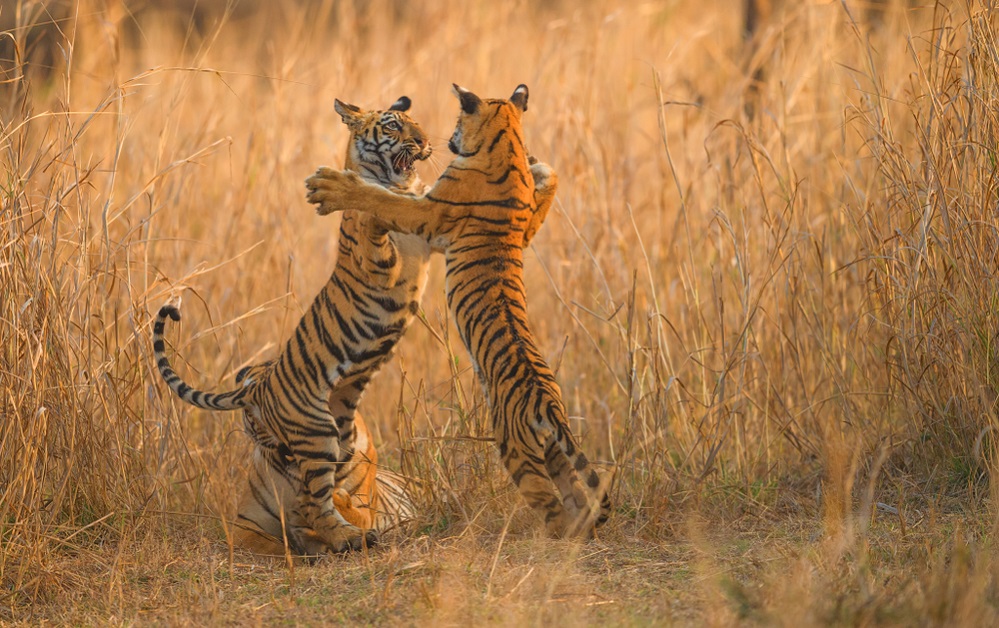
Species Diversity: Tigers are classified into six living subspecies: Bengal, Indochinese, Malayan, Siberian, South China, and Sumatran tigers. Each subspecies possesses distinctive traits and is well-suited to its particular environment.
Size and Strength: Tigers are the largest cat species, with males weighing up to 670 pounds (306 kg) and females up to 370 pounds (168 kg). They are incredibly strong and capable of taking down prey much larger than themselves.
Unique Coat Patterns: Each tiger has its own distinct stripe pattern, much like a fingerprint. These patterns help camouflage them in their natural habitats, making them highly effective hunters.
Solitary Lifestyle: Tigers are solitary creatures, and males and females only interact for mating purposes. They establish and maintain territories, which they mark with scent markings and vocalizations.
Excellent Swimmers: Unlike most cats, tigers are excellent swimmers and often cool off by taking a dip in rivers and streams. They are known to swim long distances to hunt or to find new territory.
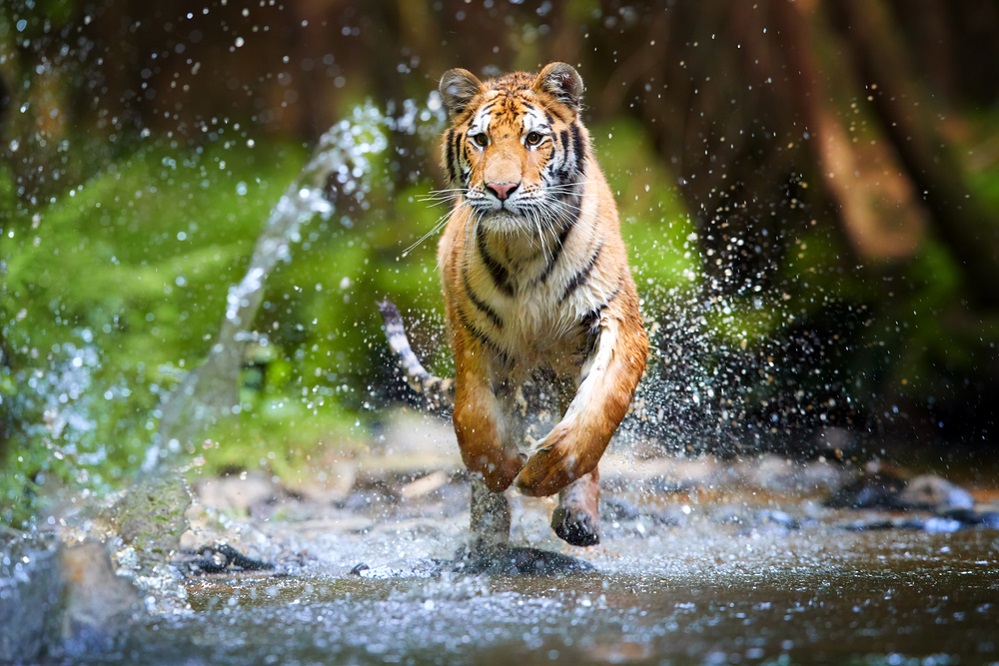
Nocturnal Hunters: Tigers mainly hunt at night, relying on their sharp senses of sight and hearing to stealthily track and surprise prey.
Endangered Status: Despite their strength and adaptability, tigers are facing a serious threat of extinction. Habitat loss, poaching, and human-wildlife conflict are the primary reasons for their decline in the wild.
Conservation Efforts: Conservation organizations and governments around the world are working to protect tigers and their habitats. Initiatives include anti-poaching efforts, habitat preservation, and community-based conservation programs.
Cultural Significance: Tigers have long been a symbol of power, strength, and beauty in various cultures around the world. They feature prominently in mythology, folklore, and art, symbolizing courage, royalty, and protection.
Ecological Importance: As apex predators, tigers play a crucial role in maintaining the health and balance of their ecosystems. By regulating prey populations, they help prevent overgrazing and maintain biodiversity.
Population of Tigers
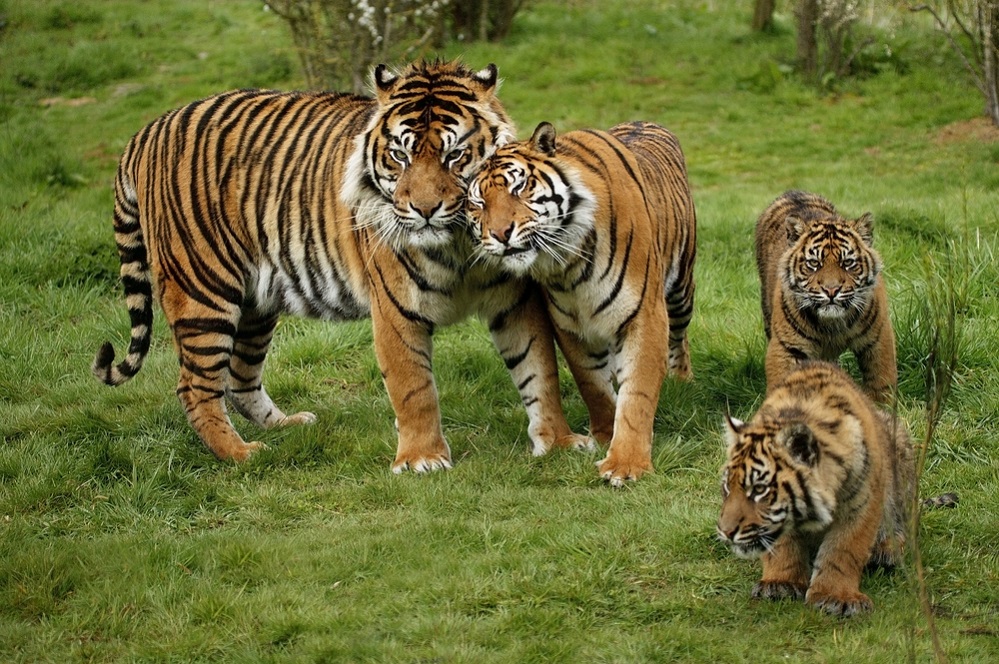
The population of tigers, once widespread across much of Asia, has dramatically declined over the past century. Historically, there were estimated to be over 100,000 tigers in the wild, but today, only around 3,900 tigers remain. These tigers are scattered across various countries in Asia, including India, Indonesia, Malaysia, Thailand, and Russia.
The decline in tiger population is primarily due to habitat loss, poaching, and human-wildlife conflict. Tigers require large areas of intact forest to thrive, but deforestation, logging, and human encroachment have led to significant habitat loss and fragmentation, isolating tiger populations and reducing their chances of survival.
Breeding and Longevity
Breeding and longevity are critical aspects of the tiger’s life cycle, influencing their population dynamics and conservation status.
Breeding
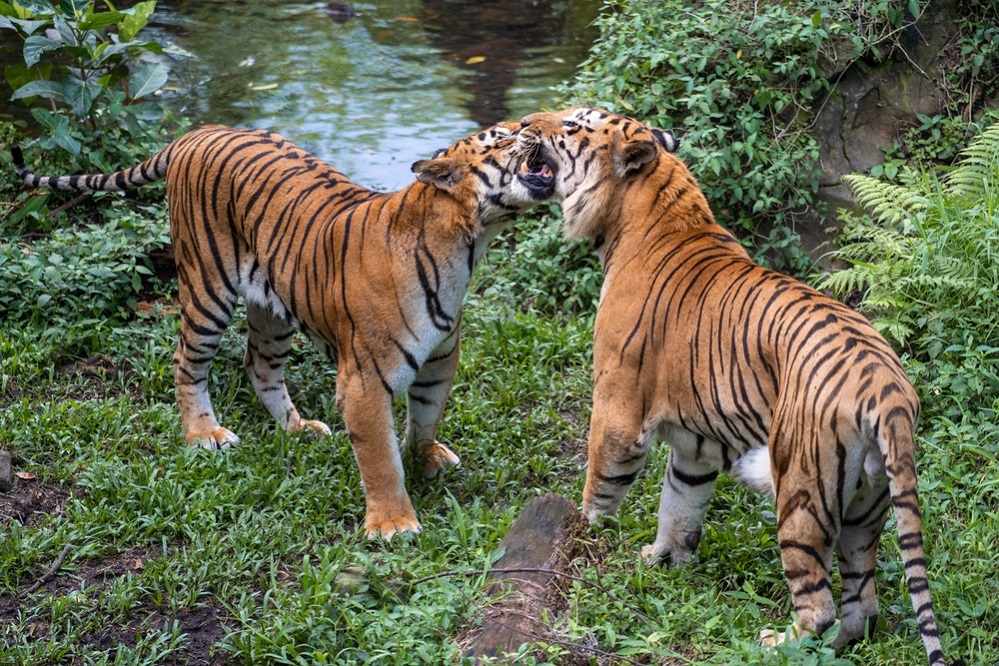
Female tigers reach sexual maturity between 3 to 4 years of age, while males mature around 4 to 5 years. Breeding can occur throughout the year, but peak activity often coincides with cooler months. After a gestation period of about 3.5 months, a female tiger gives birth to a litter of 2 to 4 cubs on average, although litters of up to 7 cubs have been recorded.
Cubs are born blind and are dependent on their mother for the first few months. They start hunting with their mother at around 6 months and become independent at about 18 to 24 months.
Longevity
In the wild, tigers typically live for 10 to 15 years, although some individuals have been known to live into their early 20s. In captivity, tigers can live longer, with some reaching 20 to 25 years of age or more. Factors such as habitat quality, availability of prey, and human-wildlife conflict can impact the lifespan of tigers in the wild.
In captivity, tigers may benefit from regular veterinary care, a consistent food supply, and protection from natural threats, leading to longer lifespans.
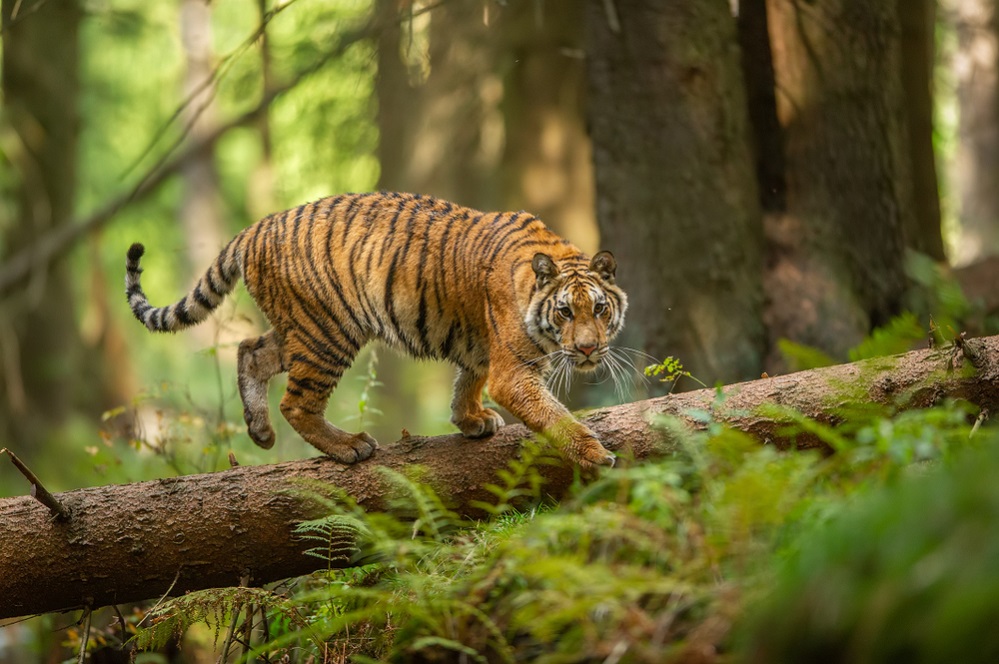
Predation and Food Habits
Predation and food habits are fundamental aspects of the tiger’s behavior and ecology, shaping their role as apex predators in their ecosystems.
Predation
Tigers are skilled hunters, relying on stealth, strength, and ambush tactics to capture prey. They primarily target medium to large ungulates such as deer, wild boar, and water buffalo, but they are also known to prey on smaller animals like monkeys, birds, and fish.
Tigers are solitary hunters, using their keen senses of sight, hearing, and smell to locate and stalk prey. They typically ambush their prey from a close distance, using their powerful jaws and sharp teeth to deliver a fatal bite to the neck or throat.
Food Habits

Tigers are obligate carnivores, meaning they rely solely on animal flesh for their diet. They have strong jaws and sharp teeth adapted for tearing and consuming meat.
After making a kill, tigers will often consume as much meat as they can at one time, as they may not eat again for several days. Tigers are also known to be opportunistic feeders, scavenging on carrion when fresh kills are scarce.
Tigers are known to be territorial and may defend their hunting grounds against other tigers. They typically mark their territory with scent markings and vocalizations to communicate their presence and deter intruders.
Vanished Tiger Species
Vanished tiger species, also known as extinct tiger subspecies, are a poignant reminder of the threats faced by these magnificent creatures. While there are six surviving tiger subspecies, three have become extinct in recent history:
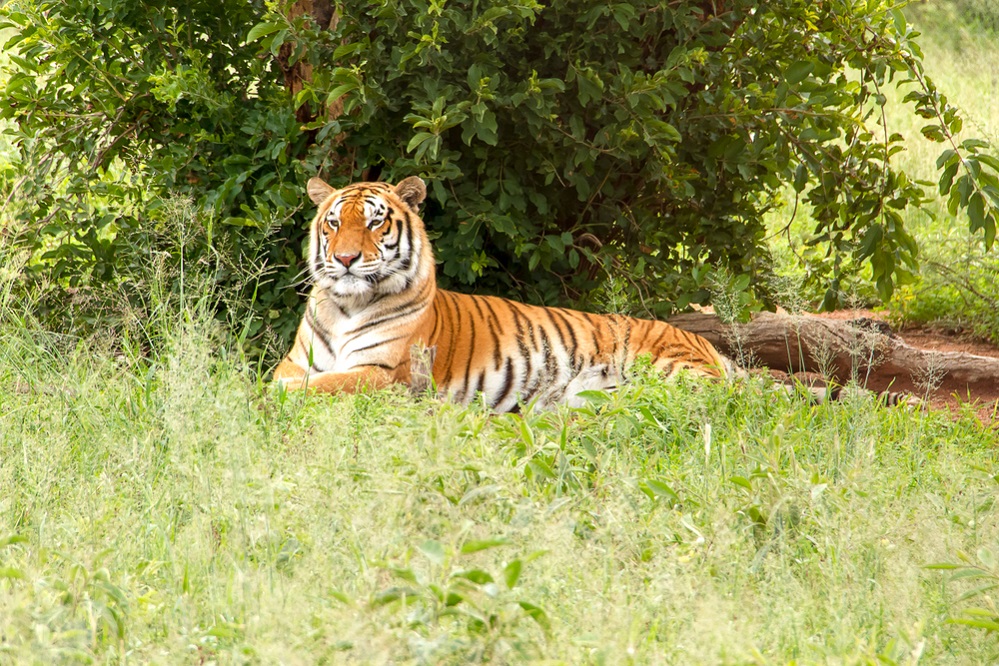
Bali Tiger (Panthera tigris balica): The Bali tiger was native to the island of Bali in Indonesia. It was last recorded in the 1930s and is believed to have been driven to extinction due to habitat loss and hunting.
Javan Tiger (Panthera tigris sondaica): The Javan tiger once roamed the island of Java in Indonesia. It was last sighted in the 1970s and is thought to have been hunted to extinction, with the last known individual killed in 1980.
Caspian Tiger (Panthera tigris virgata): The Caspian tiger, also known as the Persian tiger, inhabited a vast range from Turkey to Central Asia and into China. It was last seen in the wild in the 1970s and is believed to have been hunted to extinction, with habitat loss also playing a role.
Natural Enemies and Dangers to Tigers
Natural enemies and dangers pose significant threats to tigers, impacting their survival in the wild. While tigers are apex predators and do not have many natural enemies, they face several dangers in their environment:
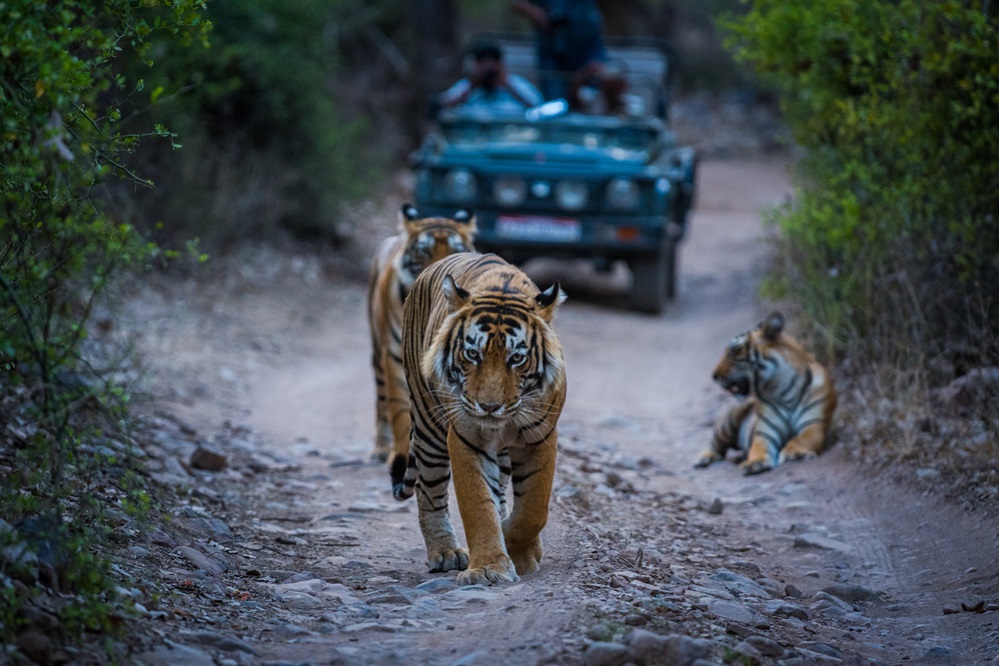
Humans: Humans are the most significant threat to tigers. Habitat loss due to deforestation, agriculture, and infrastructure development reduces the available space for tigers to roam and hunt. Poaching is another major threat, driven by the demand for tiger parts in traditional medicine and the illegal wildlife trade.
Prey Availability: Availability of prey is crucial for tiger survival. Declines in prey populations due to habitat loss, overhunting, or competition with other species can lead to food scarcity for tigers.
Diseases: Like all wildlife, tigers are susceptible to diseases that can impact their health and survival. Diseases such as canine distemper and feline panleukopenia can pose a threat to tiger populations.
Natural Disasters: Natural disasters such as floods, wildfires, and cyclones can disrupt tiger habitats and threaten their survival. Tigers may also face increased competition for food and space with other species following a natural disaster.
Intraspecific Competition: While tigers are solitary animals, they may still compete with other tigers for territory, food, and mates. Intraspecific competition can lead to conflicts and even injuries among tigers.
FAQs
How many species of tigers are there?
There are currently six living subspecies of tigers: Bengal, Indochinese, Malayan, Siberian, South China, and Sumatran tigers.
What is the largest subspecies of tiger?
The Siberian tiger, also known as the Amur tiger, is the largest subspecies, with males weighing up to 670 pounds (306 kg).
What is the biggest threat to tigers in the wild?
The biggest threats to tigers in the wild are habitat loss, poaching, and human-wildlife conflict.
How many tigers are left in the wild?
According to World Wildlife Fund (WWF) there are around 5,570 tigers left in the wild, although the exact number is difficult to determine due to the elusive nature of tigers.
How long do tigers typically live in the wild?
Tigers in the wild typically live for 10 to 15 years, although some individuals have been known to live into their early 20s.
Are tigers social animals?
Tigers are solitary animals, with males and females coming together only for mating. They establish and maintain territories, which they mark with scent markings and vocalizations.
Can tigers swim?
Yes, tigers are excellent swimmers and often cool off by taking a dip in rivers and streams. They are known to swim long distances to hunt or to find new territory.
How fast can tigers run?
Tigers can run at speeds of up to 40 to 50 miles per hour (64 to 80 km/h) in short bursts, allowing them to catch prey with ease.
Can a tiger run faster than a cheetah?
No, a tiger cannot run faster than a cheetah. Cheetahs are the fastest land animals, capable of reaching speeds up to 60 to 70 miles per hour (97 to 113 kilometers per hour) in short bursts.
Conclusion
Theo tiger stands as a symbol of strength, beauty, and resilience in the natural world. As the largest cat species, tigers play a crucial role in maintaining the health and balance of their ecosystems.
However, these magnificent creatures face numerous threats, including habitat loss, poaching, and human-wildlife conflict, which have led to a significant decline in their populations.
Conservation efforts are underway to protect and preserve tigers and their habitats. These efforts include anti-poaching measures, habitat restoration, and community-based conservation initiatives.
By working together to address these threats, we can ensure a future where tigers continue to roam the wild and inspire awe and wonder for generations to come.

